
Robinia pseudoacacia, commonly known in its native territory as black locust, is a medium-sized hardwood deciduous tree, belonging to the tribe Robinieae of the legume family Fabaceae. It is endemic to a few small areas of the United States, but it has been widely planted and naturalized elsewhere in temperate North America, Europe, Southern Africa and Asia and is considered an invasive species in some areas. Another common name is false acacia, a literal translation of the specific name.

Robinia is a genus of flowering plants in the family Fabaceae, tribe Robinieae, native to North America. Commonly known as locusts, they are deciduous trees and shrubs growing 4–25 metres (13–82 ft) tall. The leaves are pinnate with 7–21 oval leaflets. The flowers are white or pink, in usually pendulous racemes. Many species have thorny shoots, and several have sticky hairs on the shoots.

Gracillariidae is an important family of insects in the order Lepidoptera and the principal family of leaf miners that includes several economic, horticultural or recently invasive pest species such as the horse-chestnut leaf miner, Cameraria ohridella.

Macrosaccus robiniella is a moth of the family Gracillariidae.

The locust digitate leafminer is a moth of the family Gracillariidae. It is native to North America, but was accidentally introduced to Italy, where it was first found in 1970. It has now been recorded from Italy, France, Germany, Slovenia, Croatia, Austria, Slovakia, Romania, Ukraine and Hungary.

Philodoria is a genus of moths in the family Gracillariidae. All species are endemic to Hawaii. It was first described by Lord Walsingham in 1907.
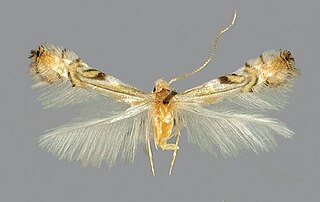
Phyllocnistis is a genus of moths in the family Gracillariidae.
Aristaea bathracma is a species of moth of the family Gracillariidae. It is known from China, Thailand, Japan (Honshū), the Russian Far East, Mozambique, South Africa, Réunion and Uganda.
Spulerina dissotoma is a moth of the family Gracillariidae. It is known from India (Bihar), Japan, Korea, the Russian Far East and Taiwan.
Corythoxestis sunosei is a moth of the family Gracillariidae, known from Japan (Kyūshū) and China.
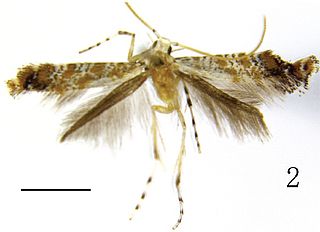
Eumetriochroa hederae is a moth of the family Gracillariidae. It is known from the islands of Honshū, Kyūshū, Shikoku in Japan and in China.
Eumetriochroa kalopanacis is a moth of the family Gracillariidae. It is known from Japan.
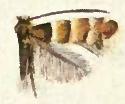
Chrysaster ostensackenella is a moth of the family Gracillariidae. It is known from Ontario, Québec and Nova Scotia in Canada, and the United States. It has also been recorded in 2015 from China and in 2017 from Korea.
Artifodina japonica is a moth of the family Gracillariidae. It is known from Japan.
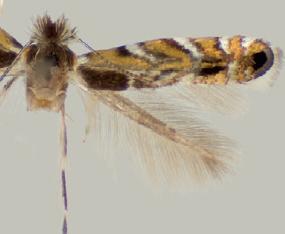
Macrosaccus uhlerella is a moth of the family Gracillariidae. It is known from Illinois, Missouri, New York, Colorado and Texas in the United States.

Cremastobombycia ignota is a moth of the family Gracillariidae. It is known from Illinois, Texas, Kentucky, Maine, New York, Massachusetts, Washington and Ohio in the United States.

Micrurapteryx occulta is a moth of the family Gracillariidae. It is recorded from across North America in the northern half of the continent, in Canada from the Maritime Provinces to British Columbia, north to northernmost Yukon. In the United States it has been found in Connecticut, Kentucky, Illinois, Colorado, Utah, Nevada, and California. The habitat consists of meadows, the edge of forests, open ponderosa pine forests, alpine meadows, the sea shore, and probably other habitats, from sea level to high elevations in the mountains, where suitable hosts occur.
Parectopa lespedezaefoliella is a moth of the family Gracillariidae. It is known from Québec, Canada, and Maine, Pennsylvania, North Carolina and Michigan in the United States.

Macrosaccus neomexicanus is a moth of the family Gracillariidae. It is known from the south-western United States in the states of Arizona and New Mexico.
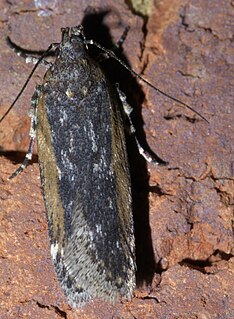
Filatima pseudacaciella, the dusky-backed filatima moth, is a moth of the family Gelechiidae. It is found in North America, where it has been recorded from California, Illinois, Indiana, Kansas, Kentucky, Louisiana, Maine, Massachusetts, Mississippi, New Hampshire, New York, Ohio, Oklahoma, Ontario, Tennessee and West Virginia.









